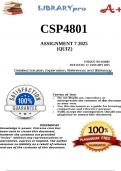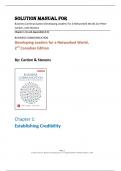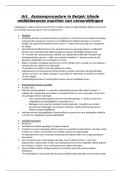Exam (elaborations)
CSP4801 Assignment 7 (QUIZ) 2025 (814881) - DUE 27 January 2025
- Institution
- University Of South Africa
CSP4801 Assignment 7 Quiz 2025 (814881) - DUE 27 January 2025 ;100 % TRUSTED workings, Expert Solved, Explanations and Solutions. For assistance call or W.h.a.t.s.a.p.p us on ...(.+.2.5.4.7.7.9.5.4.0.1.3.2)........... Question 1 Not yet answered Marked out of 2 Question 2 Not yet answered Marked...
[Show more]





